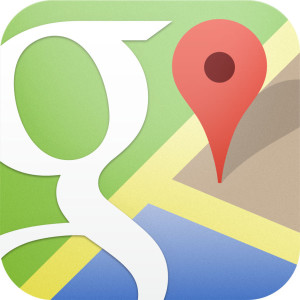 Google’s increasing use of users’ personal data in its services may in the future extend to Maps, where users could see more customised, individual views.
Google’s increasing use of users’ personal data in its services may in the future extend to Maps, where users could see more customised, individual views.
Google executives said Tuesday that in the future, what you see could be based on your previous history on Google services, taking into account the places you’ve previously reviewed or searched for, restaurants your friends have liked, or whether your history reveals that you are a football fan.
Google Maps is already used to provide directions for a specific query, but one day it could also give a wider range of recommendations for other places to explore – places that Google thinks you would like based on data.
Those are just some of the ideas that Google has for its Maps application. It’s all part of an ambitious plan to incorporate lots more contextual data into the software, so that Google can highlight certain places more than others, if it thinks they’re more relevant to the user.
“What we’re getting started now with the new Google Maps is that it shouldn’t necessarily be the same map for every person for every same place,” said Jonah Jones, lead user experience designer at Google, speaking Tuesday during the Gigaom RoadMap conference in San Francisco.
“We’re beginning to scratch the surface of what’s possible with that,” he said.
Google’s goals are ambitious, but could be realised given the gargantuan amount of data that the company has collected from its users.
For example, a regular map might show the most important arterial roads and highways. But if someone has previously shown interest in a place such as a tiny museum, for example, Google could instead highlight footpaths and more inconspicuous routes around the museum, Jones said.
Google is already incorporating more contextual information into Maps, as part of the new version it unveiled earlier this year at its I/O developers conference. Right now, Maps incorporates personalised search results such as hotel, flight and restaurant reservations.
But what Google wants to do over the next few years is to have its Maps software better understand the context surrounding users’ searches, possibly by incorporating more information about their past activity on Google’s services. That way, Google could potentially figure out whether the person is just passing through a place or is planning to stay there for an hour, and adjust the map accordingly.
“Location is just one piece of the context,” said Bernhard Seefeld, product management director for Google Maps. But it’s also a “deeper understanding of what you’re up to,” he said.
Google walks a fine line between providing a more personalised, useful mapping service, and coming off as creepy. Retailers have tried to learn more about their shoppers’ movements using their smartphone Wi-Fi signals, but in Nordstrom’s case that didn’t work out well.
Google also floated the concept of a streamlined “napkin” version of Maps that would only give basic directions to a place — maybe just a single intersection — similar to something someone would draw out on a napkin.





